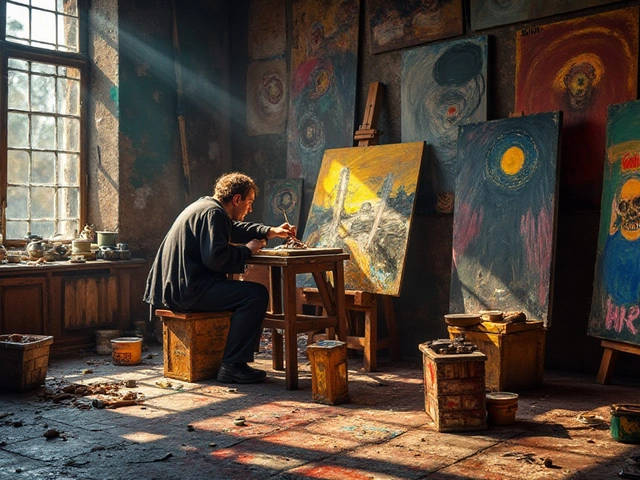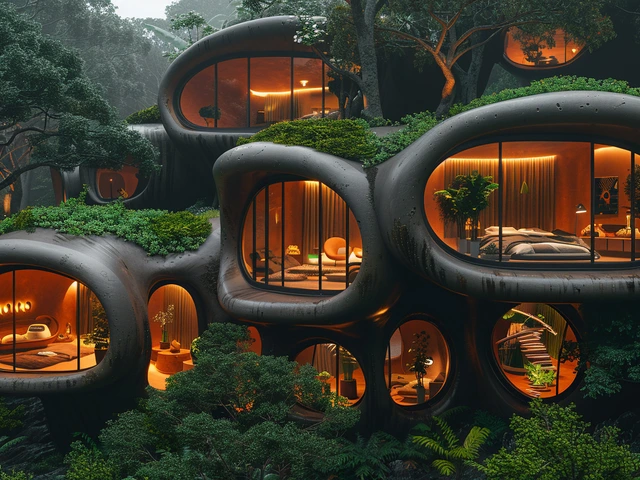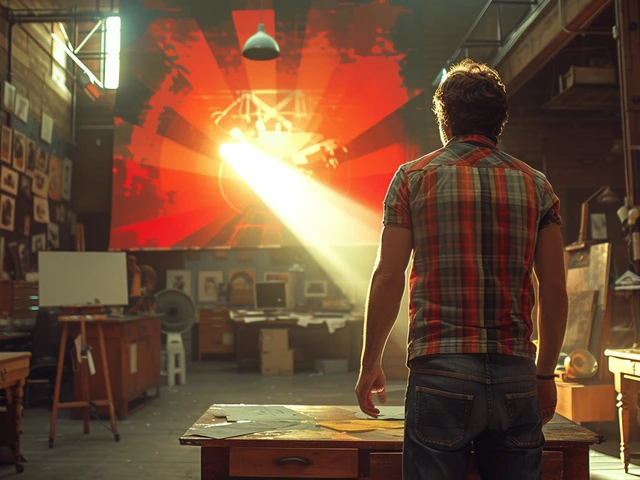Breaking Boundaries with Avant-Garde
As a wandering soul who finds solace in the exquisite world of art, I have found myself drawn towards the eruptive freedom that avant-garde represents. Avant-garde isn't simply an art form; it's a radical spirit, a rebellion against the norm, a call for change. While I was spending a lazy afternoon with my turtle Scooter, I realized how much I admired his audacity to break free from his shell. Much like Scooter, avant-garde artists, too, are constantly pushing boundaries and revealing themselves in new, innovative ways.
The idea of avant-garde isn't restricted to a particular time or space; it's a continual dialectic between convention and novelty. To comprehend avant-garde, one has to delve deep into the realm of progressive and thought-provoking creations. Not everyone might appreciate avant-garde; it’s not always a serene Claude Monet's 'Water Lilies' or Van Gogh's 'Starry Night'. Sometimes it’s raw, abrasive and brings to question our fundamental understanding of art.
The Evolution and Impact of Avant-Garde
Being a father of two beautifully creative minds, Finn and Rueben, I've noticed how the subtleties of changing perspectives impact their artworks. When we trace the evolution of avant-garde, it feels like a reflection of the world around us - influenced by sociopolitical turbulences to technological advancements.
Historically, the avant-garde movement emerged during the 19th and early 20th century, transforming the landscape of art and culture. Artists were no longer satisfied by merely reflecting the world; they aimed to transform it. From Cubism to abstract expressionism, Dadaism to futurism, various forms of avant-garde art have formed ripples in the artistic realm influencing literature, music, film and so on.
Pushing the Envelope: The Boldness of Avant-Garde Art
It was a beautiful day, not too unlike today, when my parrot, Jazzy, out of the blue, attempted to chew a Van Gogh's 'Sunflowers' postcard kept on the coffee table. I giggled at the irony and thought to myself, perhaps in Jazzy’s world, the only purpose of Van Gogh's masterpiece was to satisfy his curious beak. It reminded me of how avant-garde artists, much like the bold Jazzy, nudge us out of our comfort zones to view the world from a different perspective.
Avant-garde is fearless. The entire philosophy of avant-garde revolves around the audacity to challenge the norm, to question the established hierarchy, and to disrupt comfortable interpretations of reality. It’s like a stubborn child vehemently questioning every 'why', prompting a reconsideration of the fundamentals. This boldness can either lead to admiration or startle the viewer, yet never leaves them unaffected.
Decoding the Mystery: Understanding Avant-Garde Art
Just the other day, my younger son, Reuben, asked, “Dad, why does abstract art look so weird?”. It was then when I got a chance to explain how avant-garde art can sometimes appear strange or even nonsensical due to its deviation from the common standards of beauty. However, the allure of avant-garde lies in its enigma and liberation from constraints. It's like solving a mystery whose answer is personal to each interpreter rather than an universal truth.
The puzzling aspect of avant-garde is a recurring theme in their creations. It helps in introspecting societal norms and encourages us to think out-of-the-box. Whether it’s an installation art dissecting environmental issues or a surrealist painting exploring subconscious mind, avant-garde art forms spark insightful dialogues.
The Space for Avant-Garde: From Galleries to Streets
I remember a trip to a local art festival I took my boys to. Finn, my eldest, was awe-struck by the overwhelming array of art pieces displayed. But what intrigued him the most was the vibrant murals that adorned the city walls. Avant-garde art, with its democratization, irreverence and adaptability, finds its way from esteemed galleries to the relatable streets.
Street art, a celebrated form of avant-garde, has initiated dialogues about political dissent, social inequality and cultural reshaping. Driven by the avant-gardist spirit, artists like Banksy and Shepard Fairey have used public spaces as their canvases to relay potent messages. Their work shows that art is not confined to the elite circles but is accessible to everyone.
Avant-Garde’s Impact on Contemporary Practices
While watching an indie film with Finn last week, it struck me how much avant-garde principles have integrated into other creative sectors. From unconventional film techniques to fashion designs to music, avant-garde's radical spirit prevails.
Modern-day filmmakers push the envelope of conventional storytelling by embracing techniques such as non-linear narratives, visual absurdities and thematic ambiguity, thus resonating the avant-garde spirit. Musicians like Bjork and David Bowie have continually experimented with their style, blending uncanny sounds and visuals. Fashion, too, embraces avant-garde through designers like Rei Kawakubo and Gareth Pugh defying traditional norms.
Why Engage with Avant-Garde?
Avant-garde isn't only about abstract strokes on canvas or a jumbled composition of objects - it's about unleashing your thoughts, breaking free from the shackles, and embracing new perspectives. Whether you’re an art enthusiast or just a curious soul like me, immersing in the thrilling world of avant-garde can be a transformative experience.
Avant-garde empowers us to view things from an unaccustomed perspective, fostering originality and creativity. It allows us to challenge our comforts and extend our limits. And above all, it teaches us the most important lesson: that it's absolutely fine, desirable even, to break away from norms and to create your own reality. So why not take a plunge into the exhilarating pool of avant-garde? Who knows, you might discover a new color, or even a new you.




